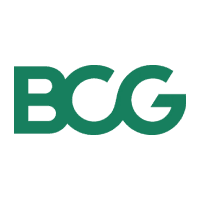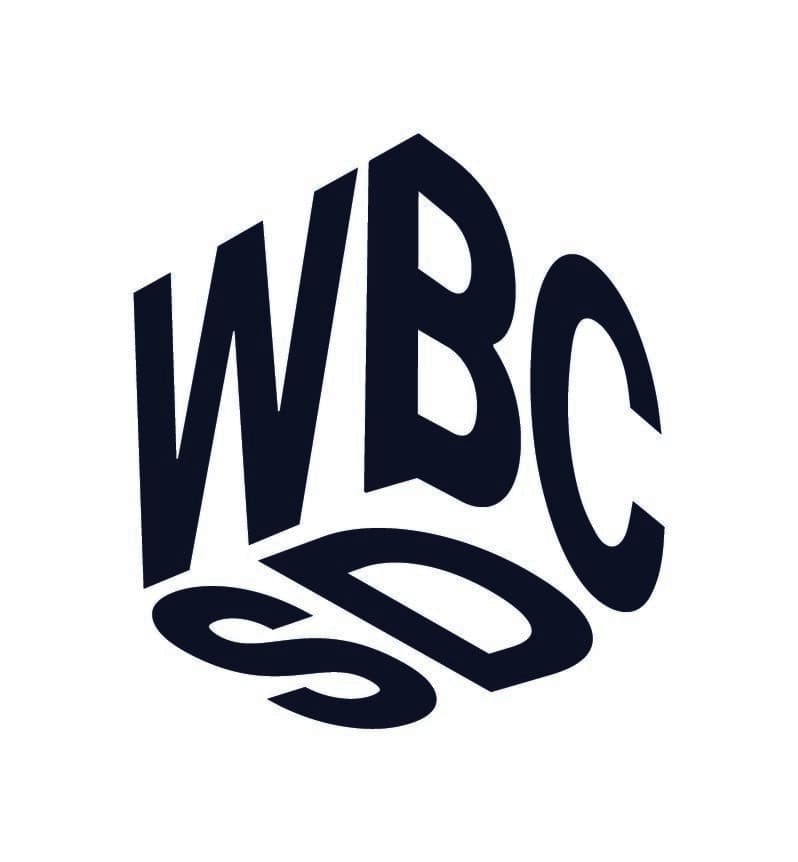
Design a supplier engagement program
 BCG
BCG WBCSD Climate Masterclass Series
WBCSD Climate Masterclass SeriesSummary
Develop supplier engagement plans for Scope 3 upstream decarbonization by securing buy-in, segmenting, tailoring engagement, and supporting the decarbonization journey of suppliers
Key resources
Context
In early September 2023, WBCSD and BCG conducted a masterclass on this topic. This document summarizes the key learnings that were presented and surfaced via rich discussion among company participants under Chatham House rules.
Scope 3 emissions form a large part of an organization’s carbon footprint. For many industries, Scope 3 is ~75-90% of emissions, and within Scope 3, upstream emissions can often account for ~80-90% of emissions (i). Reducing this footprint will require effectively engaging thousands of suppliers along the supply chain. Emissions associated with these suppliers may be related to purchased goods, capital goods, fuel and energy-related activities, transport, and other categories (per the Greenhouse Gas Protocol). Across a very large supplier base, companies need to develop actionable engagement strategies and plans that suit various types of suppliers.
Solution
Creating a supplier engagement plan for decarbonization includes four steps that can be tailored to different company and supplier contexts.
Step 1: Secure internal buy-in
For companies committed to achieving Net-Zero emissions, Scope 3 decarbonization will need to be a priority business transformation. Consequently, ambition- and goal-setting on Scope 3 should ideally come from the highest levels of the company (e.g., CEO and C-suite).
To go deeper on decarbonization and ensure supplier engagement is efficient, smooth and effective, companies will benefit from ensuring alignment and buy-in from the relevant business units (BUs) and other stakeholders such as senior leadership beyond the C-suite, procurement, operations, accounting and finance, marketing and sales, and legal and regulatory teams.
Procurement: This team’s role is central to supplier engagement, including to evaluate and establish new sourcing contracts with suppliers for sustainability, and will value cost advantages where possible, meeting clear corporate objectives, and minimized disruptions to the supply chain. However, <10% of procurement teams are trained in sustainability (1)
Senior leadership: Senior leadership can provide strategic steering in supplier engagement on decarbonization, while being compelled by benefits of attracting new customers, talent, investors and better valuation as a climate leader
Accounting & Finance: This team can support by performing financial feasibility analyses of supplier decarbonization measures, and may find attractive the possible improved access to lower-cost financing for sustainability-related efforts (1 in 3 dollars invested globally today) (2)
Legal & Regulatory: To anticipate and meet evolving environmental regulations (e.g., proposed Scope 3 disclosures in the US and upcoming Corporate Sustainability Reporting Directive (CSRD) in the EU), these teams may need to sign-off on suppliers, which will help avoid potential penalties and reputation damage
Leading companies express that robust internal buy-in is critical before engaging with any suppliers. Demonstrated leadership from the CEO / C-suite signals to other departments that supplier engagement on decarbonization is an enterprise-wide priority for transforming the business. Moreover, using internal communications channels to clearly and simply explain the value of supplier decarbonization allows individuals across all departments to see how they will benefit from a decarbonized supply chain.
Buy-in across these groups can be reinforced by cross-functional collaboration, for example:
When establishing new sourcing contracts, procurement teams may work together with finance and legal/regulatory teams to ensure that both current and upcoming disclosures are met
When evaluating the feasibility of new products, bringing in R&D, quality and manufacturing teams ensures that sourcing strategies are aligned with overall organizational objectives from an early stage
Step 2: Segment suppliers
Suppliers across all parts of the value chain can be assessed on their emissions impact as well as their readiness/maturity on climate issues, to determine the best pathway forward for engagement. Typically, procurement teams have limited resources to engage with every supplier with the same depth. In practice, to tailor the engagement, we can categorize suppliers into three broad categories, while there may be nuances: Strategic, High-impact and Transactional. This classification should be treated as dynamic and suppliers can be upgraded/downgraded based on performance.
Strategic suppliers: Those with both high climate maturity and high emissions
High-impact suppliers: Those with low climate maturity but high emissions
Transactional suppliers: Those with low emissions impact across all levels of climate maturity
Figure 1: Segment suppliers based on emissions and readiness into high impact, strategic & transactional

Source: BCG's Supply Chain Net Zero Academy
Suppliers can also be categorized by leveraging other metrics that align with the company’s priorities (e.g., a supplier’s contribution toward business/profit, supply risk, or reputational risk to the business from supplier non-compliance). When dealing with suppliers that companies rely heavily on, companies must balance emissions standards with maintaining necessary supply.
Step 3: Effectively engage suppliers and Step 4: Support the decarbonization journey
Once suppliers have been segmented, there are a few key steps that companies can take before engaging any suppliers. Typically, supplier codes of conduct can be first updated in line with sustainability / emissions reductions considerations. Next, the company can develop a plan for when and how to engage suppliers and in what forums. Then, the company can move forward with this plan, such as by hosting Supplier Days to notify all suppliers of changes to the code of conduct and any requirements. Upon completing these steps, the company can then pursue individual or targeted engagements with suppliers.
When engaging suppliers to secure their buy-in and then working with them to support their decarbonization journey, efforts should be tailored based on the supplier type for optimal effect. See the table below for best practices on how to approach each group.
Segment | Step 3: Effectively engage suppliers Engaging suppliers in this group is best done through: | Step 4: Support the decarbonization journey Companies should support suppliers in this segment by: |
|---|---|---|
Strategic suppliers – Partner to pioneer | • A partnership approach to co-develop a decarbonization strategy, with leadership engagement and involvement of procurement teams for follow-up • 1:1 meetings or other meaningful time and effort to push the envelope | • Co-developing an engagement roadmap with established action plans and review periods • Offering visibility into areas for improvement • Hosting innovation workshops, or having dedicated small forums or supplier summits • Supporting with direct incentives, incl. financial incentives |
High-impact suppliers – Upskill to steer | • Procurement teams communication, with senior leadership involved where needed • 1:1 opportunities to review action plans and update on progress • Other targeted, direct engagement on priority areas and places for improvement | • For a small subset, co-developing an engagement roadmap • For the majority of High-impact suppliers, assisting with roadmap creation, e.g., via upskilling the supplier base with customized trainings and workshops • Encouraging action through direct incentives (and disincentives), including financial incentives • Providing periodic reviews and progress updates |
Transactional suppliers – Make aware to activate | • Unidirectional, mass-scale forums for engagement and broad-reaching internal/external supplier networks • Leveraging existing communications channels (e.g., email / push notifications) for conveying standards and targets • Using surveys to collect data on progress | • Providing support / education material to raise awareness on key topics (e.g., disclosures and setting baselines) • Holding webinars to review formal notifications and answer questions • Qualifying new suppliers / renewing suppliers on the basis of threshold standards |
Considerations for Step 3: Effectively engage suppliers
Working with Strategic and High-impact suppliers, for example, to partner on decarbonization solutions, may take significant time and effort, and may be addressed by purposefully selecting these suppliers and structuring the ongoing interactions. When starting to engage, avoid reaching too broadly. Instead, use small pilot groups of highly engaged, important suppliers to see what works or does not (e.g., materiality assessments, questionnaires, co-creation workshops) before expanding the scope of the effort.
For suppliers operating in industries with high sustainability risk, mandating emissions standards may be critical for mitigating non-compliance and regulatory risks (e.g., plastics suppliers are facing higher scrutiny with upcoming regulation in the EU/US on fully eliminating PFAS and other microplastics). In cases where suppliers are more strategic/important to the company than the company is to the supplier, cooperating and coordinating with other companies/peers in the industry who also use the same suppliers may be an effective approach to constructively engage them.
Common pitfalls expressed by corporates when working with Transactional suppliers include a lack of resources to support sustainability efforts, a tendency to prioritize other areas (e.g., cost savings) over sustainability, and supplier concerns about sharing data/information. As one approach to address the latter, companies can assuage suppliers’ concerns by assuring them that information collected will be used for self-assessment over time, rather than as a means to compare against other suppliers.
Considerations for Step 4: Support the decarbonization journey
A company can accelerate progress with Strategic and High-impact suppliers in co-developing and implementing their decarbonization plan, by supporting the following:
Assessing suppliers’ emissions baselines and helping set targets
Evaluating cost and readiness of decarbonization levers by procurement category (and suppliers therein)
Identifying initiatives, specifying timelines, and mapping KPIs that suppliers need to meet
Outlining a pathway, setting interim targets, and agreeing on formalized targets with suppliers
Developing roadmaps, actions, and budgets, as well as outlining meeting cadence, reporting, and necessary disclosures collaboratively with suppliers
Usage
Solvay is a global science company with over 30,000 suppliers and a mission to create sustainable shared value for all. Solvay One Planet, the company’s sustainability roadmap, establishes goals to fight climate change, embed circularity, and improve quality of life. Beginning in 2021, Solvay ramped up its upstream Scope 3 decarbonization efforts, first launching Solvay Supplier Days and offering Supplier Engagement Program & Innovation awards to motivate and generate buy-in from suppliers. Afterward, as part of Together for Sustainability, Solvay introduced the Product Carbon Footprinting (PCF) methodology and began piloting these assessments with a subset of its Strategic suppliers. Today, Solvay has set concrete SBTi-approved targets and procurement team objectives on Scope 3, while building its decarbonization roadmap, implementing a broader supplier PCF program, tracking all supplier emissions, and engaging key suppliers more deeply in emissions reduction programs (ii).
Meta is a multinational technology company pioneering meaningful action on sustainability and climate change. Meta established a supplier engagement pilot program in 2021 with 39 of its key suppliers to calculate, report and reduce their greenhouse gas emissions. The program grew to 114 supplier participants the following year and expects to cover 2/3 of all their 500+ suppliers by 2026. Meta’s program has four pillars: Capacity building, Accounting, Target setting, and Execution. To date, the program has focused heavily on capacity building and upskilling for Meta’s most pressing sustainability topics (e.g., emissions, renewable energy), while digging deeper into the ‘Execution’ pillar to identify emissions reduction opportunities hand-in-hand with suppliers (3).
Volvo is an auto manufacturer with an ambition to be a leader in ethical and responsible business conduct, especially regarding supplier engagement. Volvo’s supplier engagement process begins with a publicly available supplier code of conduct, which outlines both baseline requirements as well as aspirations for suppliers to meet across People, Resources, Climate and Business Ethics issues. In line with best practice, Volvo has selected Net-Zero ambition, circularity, responsible and ethical raw materials sourcing, and energy consumption as the few priority topics on which suppliers should concentrate their efforts. Additionally, to engage with suppliers seamlessly and simplify communications, Volvo leverages its Supplier Portal for easy exchange of information; the Portal can communicate with nearly all suppliers. Additionally, Volvo has developed several tools and models for evaluating suppliers’ capabilities or assessing new suppliers/contracts.
Nestlé is a global food/beverage company leading on sustainability and supplier engagement, with suppliers in 188 countries worldwide. Nestlé has outlined for all its suppliers a Responsible Sourcing Standard with non-negotiable requirements, and clearly communicates additional compliance requirements for existing/potential suppliers for its top 14 raw materials with high sustainability risk (e.g., potential for human rights violations, deforestation, etc). As participants in Nestlé’s supplier engagement efforts, suppliers have access to a range of self-assessment tools, and guidance and training documents on sustainability. In addition, Nestlé’s Supplier Portal facilitates cross-functional collaboration between Nestlé and its supplier base while streamlining communications channels to share sustainability and other important updates (e.g., contract negotiations, requests for information, compliance updates).
Impact
Climate impact
Targeted emissions sources
Supplier engagement programs for decarbonization facilitate emissions reductions primarily in:
Scope 1 (of suppliers): emissions from heating
Scope 2 (of suppliers): emissions from electricity
Scope 3 (of purchasing company, primarily in these upstream categories):
Category 1: (Purchased Goods and Services)
Category 2: (Capital Goods)
Category 3: (Fuel- and Energy-Related Activities)
Category 4: (Transportation and Distribution)
Category 5: (Waste Generated in Operations)
Decarbonization impact
The decarbonization impact of helping suppliers reduce emissions varies by sector, based on the proportion of Scope 3 emissions, but supplier engagement represents a crucial component of addressing GHG emissions for most industries. Industries that are closer to the consumer will often have a higher proportion of Scope 3 (upstream and downstream) emissions than manufacturers and others further upstream in the value chain. Examples of these industries include (iii):
Apparel: ~85%+ Scope 3 emissions
Biotech: ~75%+ Scope 3 emissions
Food & Beverage: ~85%+ Scope 3 emissions
Retail: ~90%+ Scope 3 emissions
Ultimately, all upstream Scope 3 emissions boil down to the operational (Scope 1 and 2) emissions of a supplier somewhere in the value chain.
Business impact
Benefits
Strengthened supplier relationships: Continued and purposeful engagement on decarbonization helps show suppliers that the company is invested in fostering enduring relationships with them and their long-term success.
Potential cost savings: Sustainable procurement can also save costs when approached with that mindset. For example: lightweight packaging improves sustainability and material costs; adjusting sourcing strategies towards local purchasing reduces the carbon footprint and transportation costs; requiring suppliers to procure renewable electricity to the extent possible can result in lower electricity costs from declining costs of renewables and potential shared savings. The magnitude of these cost savings depends on what is being procured and the region.
Advanced compliance: Anticipating and meeting evolving environmental regulations helps companies avoid potential penalties and reputational damage.
Improved brand reputation: Market positioning as a sustainability leader attracts environmentally conscious consumers, investors, and employees.
Increased operational resilience: Minimizing exposure to fossil fuel-related risks reduces supply chain disruptions and fosters a strong value chain.
Costs
Investment required: After setting clear expectations and targets for Scope 3 internally, upfront investments may be needed, for example, to upskill procurement teams, ensure support for the teams to engage and educate suppliers, and establish data systems to track suppliers and communicate with them.
Eventual subsidies used:
Regional and country-specific subsidies apply for supplier decarbonization efforts based on location (e.g., IRA and IIJA in the US for renewable energy, European Green Deal).
Possible incentives are available from financial institutions looking to promote supply chain decarbonization (e.g., green bonds, cheaper supply chain financing for green suppliers).
Relevant dependencies: Potential for pushback from suppliers exists if transparency, support, and realistic timelines for decarbonization planning are not established.
Implementation
Approach
When implementing supplier engagement program on decarbonization, it would be helpful to:
Communicate expectations clearly: Start by updating the supplier code of conduct and letting all suppliers know how expectations will change going forward (e.g., via a Supplier Day / existing communications channels)
Decarbonization standards may also be discussed with all suppliers as part of contract renewal and in RfP processes
Upskill procurement teams: Equip the procurement team with the tools and knowledge they need to drive supplier decarbonization efforts (e.g., emissions baselining, understanding guidance/ standards, industry trends in decarbonization, supplier segmentation)
Segment suppliers and develop engagement plan: Tailor engagement with suppliers based on their segment (i.e., emissions impact, climate readiness, other pertinent factors), and by instilling ownership of shared goals
Support and upskill suppliers: Work together with suppliers to educate them on emissions reduction topics, assist them with roadmap development, and establish a pathway for decarbonization
Implementation and operations tips
Prioritize topics: Rather than trying to engage suppliers on a variety of sustainability topics at once, select those that are most material to the company (e.g., emissions, water use, nature/biodiversity) and prioritize efforts in a small number of areas before tackling other subjects
Integrate sustainability: To generate buy-in with suppliers, integrate and demonstrate the value of decarbonization. In order to keep the interactions with suppliers manageable, incorporate sustainability topics into all supplier meetings, and avoid having standalone sustainability-related meetings
Instill ownership: Make sure that suppliers feel that they own their decarbonization journeys by showing them the why and the how:
Engagement roadmaps along with business cases can show suppliers why decarbonization is important (e.g., cost savings, green premiums, enhanced reputation, financial incentives, regulatory pressure)
Upskilling and resources can guide suppliers on their decarbonization journey
Be specific with the ask: When asking suppliers to come to the table with plans for decarbonization, provide clear, specific guidance about the kinds of outcomes, analyses, and materials required of them (e.g., to avoid sales pitches)
Review progress: Routinely check in on supplier decarbonization ambition and performance, to focus efforts on driving meaningful impact
Footnotes:
(i) Note: BCG Analysis based on the Greenhouse Gas Protocol, and CDP 2022-2023 data
(ii) Note: Based on Masterclass case
(iii) Note: BCG Analysis based on recent CDP Questionnaire
Going further
Check out other summaries from the Supply Chain Decarbonization masterclass series: